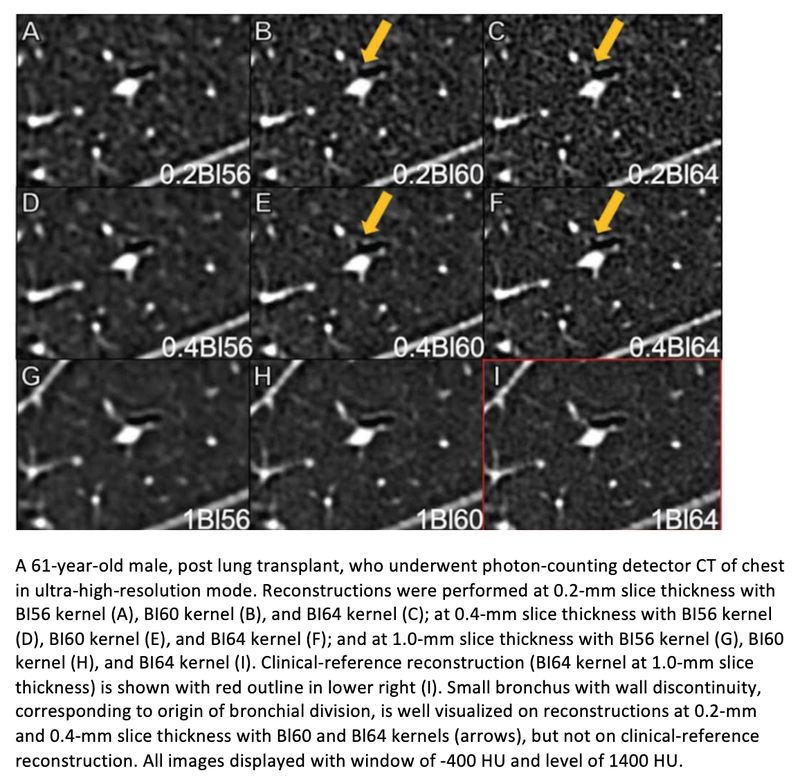Kernel and Slice Thickness Matter in Photon-Counting CT Lung Imaging
 A study published in the American Journal of Roentgenology provides insights on the association of reconstruction kernel and slice thickness with image quality when implementing ultra-high-resolution photon-counting detector (UHR PCD) CT of the lungs.
A study published in the American Journal of Roentgenology provides insights on the association of reconstruction kernel and slice thickness with image quality when implementing ultra-high-resolution photon-counting detector (UHR PCD) CT of the lungs.
Evaluating the impact of kernel and slice thickness on image quality of UHR PCD CT of the lungs using a 1024x1024 matrix, “the sharpest evaluated kernel, BI64, was the optimal kernel, consistent with the current clinical-reference technique,” wrote corresponding author Helmut Prosch, MD, from the department of biomedical imaging and image-guided therapy at the Medical University of Vienna in Austria.
In the manuscript, 29 patients (17 women, 12 men; median age, 56 years) underwent noncontrast chest CT using a first-generation PCD scanner (NAEOTOM Alpha, Siemens Healthineers, Forchheim, Germany) from February 15 to March 15, 2022. All acquisitions used UHR mode. Nine image sets were reconstructed for all combinations of three sharp kernels (BI56, BI60, BI64) and three slice thicknesses (0.2, 0.4, 1.0 mm). Three radiologists independently reviewed reconstructions for measures of visualization of pulmonary anatomic structures and pathologies using clinical-reference: BI641.0-mm
Ultimately, when performing PCD CT of the lungs in UHR mode, reconstruction using BI64 kernel and 0.4-mm slice thickness was the only assessed reconstruction to yield improved bronchial division identification and bronchial wall and pulmonary fissure sharpness, without loss in pulmonary vessel sharpness or conspicuity of nodules or other pathologies.
In comparison, a 0.2-mm slice thickness—the thinnest reconstruction possible—was “associated with decreased visualization of various anatomic and pathologic findings,” the authors added.
Related Articles
Citation
Kernel and Slice Thickness Matter in Photon-Counting CT Lung Imaging. Appl Radiol.
December 9, 2022